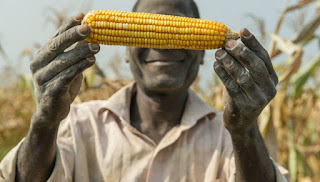GM crops

GM Crops - Burgeoning issue In 2018, 35% of Kenya's GDP came from the agriculture sector. In Kenya, over 70% of the working age rural population works in the agricultural sector . 90% of Sub-Saharan Africa's is reliant on rain-fed agriculture . Africa and Kenya's over-reliance on this type of agriculture means that droughts can cause huge financial problems and reduce food security massively. In 2016, small holder farmers in eastern Kenya lost more than 80% of their crops. Kenya recently took the steps to lift bans on genetically modified crops to help ease some of the pressure . Benefits of GM Africa's population is predicted to increase by over 1 billion by 2050. Compared to Africa's population, the share of genetically engineered crop acreage is very small and only commercially cultivated in four countries . The growing population will need to sustain itself with both food crops and cash crops to continue economic development. Studies have also shown t...

